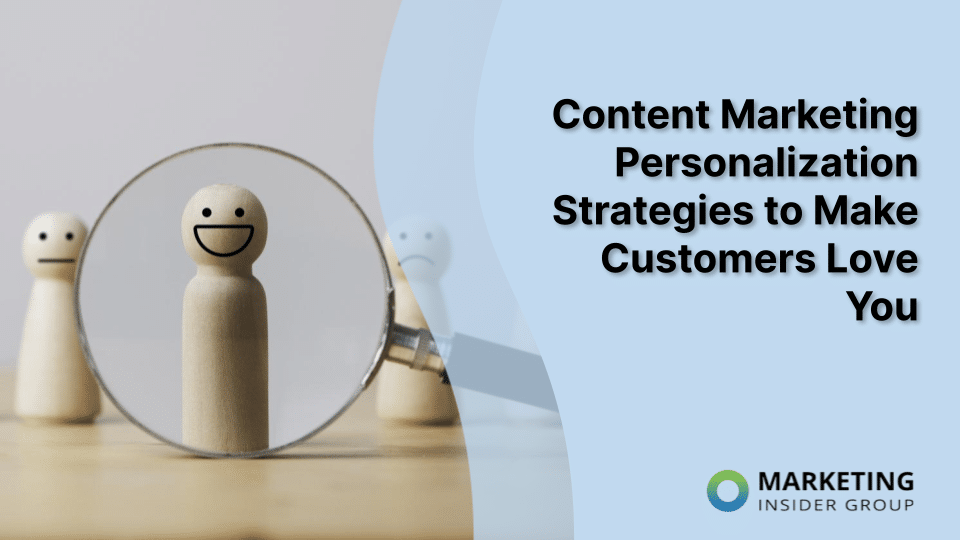
Content Marketing Personalization Strategies to Make Customers Love You
It’s becoming harder and harder to reach today’s consumers. Almost every marketer is creating and sharing new content about their brand every day. A good content strategy with an effective distribution plan no longer guarantees that your content will get seen by your target audience.
So how do you make sure the content you’re producing stands out from your competition and win a customer’s attention? By getting the right content in front of the right people at the right time through the right channels, you can much more effectively reach, engage and convert your target audience into customers.
It makes sense that personalized content is more appealing and persuasive – nobody wants to feel like they’re just another nameless customer or that a business cares only about increasing sales rather than catering to their individual needs.
So you probably already instinctively understand that using personalization is something that you should be doing, but it’s also a proven marketing technique – 90% of US adults say that they find personalized marketing content appealing, and personalized CTAs are over 200% more effective than generic CTAs.
Big companies like Amazon and Netflix have also been using personalized content for years in the form of individual recommendations.
But personalization initiatives don’t come cheap, so you need an assurance of ROI. Let’s look at what the data says. In Monetate’s Personalization Development study, 93 percent of responding companies said that advanced personalization led to revenue growth! Others with less sophisticated strategies still experienced revenue increases.
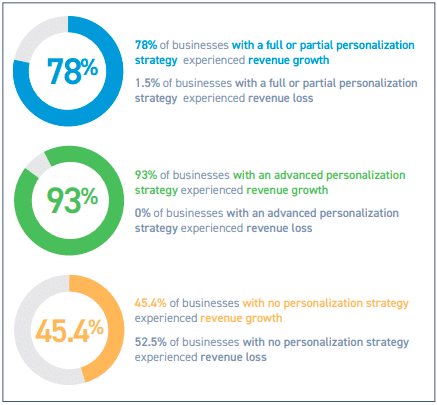
The study also looked at the goals of companies that use personalization, revealing that’s it’s typically long-term nurturing objectives they want to achieve.
Quick Takeaways:
- Content personalization is a way to build trust and loyalty with customers.
- Customers appreciate, and in some cases, have a high demand for content personalization.
- Executing personalization strategies can have a significant impact on conversions and revenue.
What Is Content Personalization?
Content personalization is showing customized brand and marketing messages to individual audiences by tailoring all forms of content, including web, email and social, according to their needs and interests.
Why is this important? With the flood of content people are exposed to every day, they will only read what is relevant and valuable to them. And sadly the rest will just be ignored and won’t ever get read.
To cut through the clutter and make your target audience stop to read and engage with your content, it needs to speak to the challenges they have, and offers the solutions they’re looking for.
Personalization can be quite difficult when it comes to content marketing. As Rebecca Lieb of Altimeter Group says, content marketing tends to be of longer form and less automated compared to other personalized marketing activities like banner ads or phone calls. So if you’re working with very little budget and resources, is content marketing personalization even possible?
The answer is yes.
And it starts with…
Understanding Your Audience
Who is your target audience? What are the challenges and pain points that are keeping them up at night? When, where, why and how do they look for solutions and access content?
Conducting external research and competitive analysis will help you learn more about your prospects, but you’ll also want to leverage the customer data and insights you already have to inform your content personalization strategy.
Jon Miller, the former VP of Marketing and Co-founder of Marketo, recommends marketers to even talk to people who work at the companies you’re targeting. Find out what they care about the most and what is really relevant to them. Learn the kind of language they use. And when you create your content, you can use the language they use so it speaks and resonates with them.
Ultimately you want to develop a deep understanding of whom your brand is communicating with, what types of topics and content your target audience wants and needs, and once you have those insights, personalization can be applied through different content topics and formats, channels and platforms based on their preferences.
The next step is to research and understand where and how your target audience prefers to be contacted or interact with your brand.
Which format resonates with your customers and gets their attention? Which channel does your target audience already spend time on or prefer? Is it email, SMS, video, social media (which platform?) or display?
Each platform and format has their own unique strengths and weaknesses. And it’s important to identify them so you can develop the appropriate measurements to track and evaluate their individual performance, and using them to inform your content strategy so you can leverage all the channels and formats that are relevant to your target audience.
Mining Customer Data
To develop effective content that resonates, you need to first understand who your target audience is. And first-party and third-party data can help build that foundational understanding of your customers.
First-party data is the customer information collected and stored in your CRM systems and other marketing technologies, including data from your website, mobile app, call center and any other channels or platforms where customers may interact with your brand.
Third-party data is the consumer data you can purchase from external sources such as publishers or advertisers, which can include information like demographics, purchase transactions and online behaviors.
To develop a deeper understanding of your target audience, you will also want to look into three other types of data: social, search and offline data.
Social data would include things like the content types that your target audience is most interested in, the language they use when talking about your industry, product or service, and your competitors, and individuals, sources and any other factors that may influence your target audience.
Search data would look at the questions, terms and keywords your target audience uses when searching for information and answers about your brand, product, industry and competitors. Search data can help you identify the pain points, concerns, goals and aspirations your target audience may have.
Offline data, as the name suggests, is any information you can gather based on offline interactions with customers, such as in-store or in-person events.
Gathering and Using Intent Data
Intent data is one of the most important tools for creating hyper-personal content. However, that data can be pretty hard to come by. For example, according to Marketing Land social media “likes” aren’t actually great indicators of user interest, since followers sometimes like things they don’t really have strong feelings about.
A better way to track which parts of content gets users excited is to break white papers, eBooks, and even blog posts into sharable parts. That way, audiences can share the interactive infographics, stats, and quotes that most resonate, giving readers a great way to interact with static content and marketers a better understanding of which pieces are resonating.
Managing Customer Expectations
In the world of recommendations (think Netflix and eCommerce), buyers expect personalization. When they receive it, this has an impact on their behaviors. Customers actually become frustrated with brands that don’t personalize. One study broke down the types of frustration they feel and what companies do to trigger it.
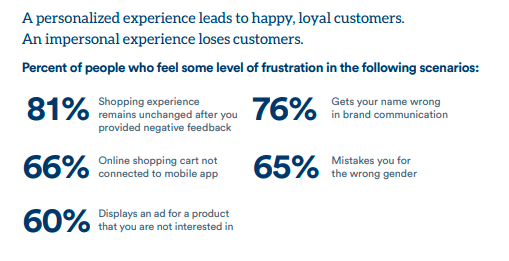
Customer frustration can lead them to your competitors, so it’s imperative to develop personalization strategies to retain and nurture buyers.
Now that we know the consequences of personalizing or not personalizing in your content strategy, it’s time to talk strategy.
Content for First-Time Visitors
When a new customer or user comes to your website for the first time, you want to make sure to impress them.
New users have very different needs than repeat visitors to your site. They won’t know where to start looking for the information they’re after and they may not have any existing trust or knowledge of your brand.
You can personalize your homepage with a welcome message or pop-up and direct them to useful content such as your “about us” page and most popular articles, or even ask them to sign up to your list.
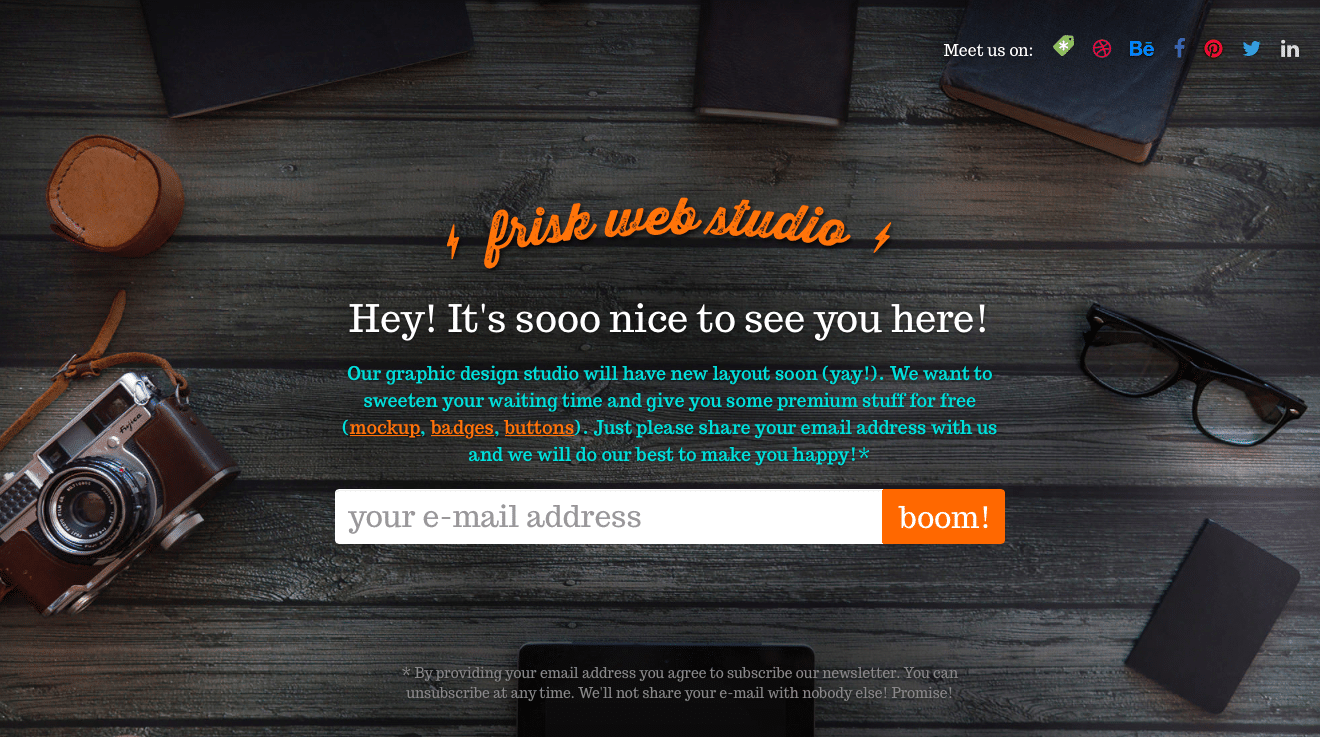
One of the simplest ways to personalize content, which also doesn’t require any data collection from the user and can be fully automated, is to add some recommendations of similar or related content into each blog post
There are various “related posts” plugins and widgets that can handle this task for you, including several WordPress plugins and some platform-independent services. You’ve probably seen the results of using this software before in the form of several linked posts with thumbnails at the bottom of blog posts. Some software also enables you to link the related post in the middle of your content or as a slide-in or pop-up.

Adding related posts is a non-intrusive way of personalizing content and making it more useful for the reader. You’re not relying on cookies or personal information but simply recommending further content based on the topic of the post they’re reading. It provides additional helpful content for the user and benefits you by increasing the time each user spends on your site.
This is also a “set it and forget it” feature so you don’t need to browse through your catalog of previously published blog posts to find related content – the software will do all the work for you automatically.
Returning visitors are more likely to have seen your best content before so it would be more useful to display your newest content, or for an ecommerce site, content and products based on past purchases.
Making Content Valuable and Useful
Right now, there’s more marketing content out there than ever before, and according to recent studies, we should brace ourselves for even more. But in the rush to create more content quickly, many marketers forget that content has to give more than it gets. In fact, the VentureBeat study shows 40% of consumers want a guaranteed offer before they’ll even give up so much as an email address.
Adding quizzes, calculators, and assessments can create context around a piece of content, offering the audience specific solutions rather than generalized sales pitches. For example, when Pearson Education released an eBook offering solutions for improving instruction systems, the company also included an interactive quiz that allowed educators to self-identify pain points within their organizations. Pearson then tailored solutions to the responses, which allowed the audience to explore the eBook on their own terms, identifying relevant information for themselves and discovering exactly how Pearson could help solve problems unique to the individual user.
The hard truth is that there are already thousands of pages of content targeting every audience under the sun, but offering personalized solutions could be the key to ensuring your brand doesn’t blend in.
Product Recommendations Based on Customer Data
What’s more, offering audiences quizzes, calculators and assessments to show the value of a product means that marketers get valuable data for targeting future offers. In the age of cross-device, hyper-personalized marketing, customers expect offers tailored to them. In fact, 77% of digital natives expect personalized website experiences.
As customers crave more attention but less face-to-face contact, online companies that offer interactive customization thrive. For example, Stitch Fix is an online clothing company that gives new customers an introductory assessment of their clothing preferences along with a lifestyle quiz. The brand then sends users a monthly box of customized clothing that users can purchase or return. It’s a formula that works: Stich Fix was valued at $250 million, proving yet again that just because many consumers would rather shop online doesn’t mean they want to be anonymous.
Persona-Based Content Personalization
In this type of personalization, you are using your buyer personas as the standard. Buyer personas include demographics but, more importantly, preferences, motivations, and behaviors. Check out the video below for a primer on buyer personas.
Personalizing on personas is challenging. It requires a data-driven approach. You must track and monitor your personas, collecting as much data as possible to ensure you are aligning with what matters to them. You will need an infrastructure for this and a marketing automation platform that cookies your visitors while also connecting activity with that specific content.
It can take a while to perfect this, but you should see nice returns when it starts working. For example, if you have a persona group that meets a lead score because of specific actions—downloading content, opening emails, attending a webinar, or other steps—you can personalize how you present content to them, so that it’s relevant.
Personalization Based on Channels
A second personalization strategy is to let the channel dictate the content. Audiences have many ways to interact with your brand. There are your owned media like your website and email; then there are the third-party channels like social media and anything else that you don’t have direct control over.
Your audience will have preferences here, and the channel they choose says a lot about the content they want. For example, a buyer engaging with you on social media may lean toward content that demonstrates social proof of your brand’s credibility, like case studies or testimonial videos. Those who prefer your website may be looking for content that speaks to their challenges and overcoming them.
By far, the most personalized channel is email marketing. This isn’t just because you can insert tags like name or other unique identifiers. It’s a conversation, a personal interaction. The emails you send must be relevant and valuable, and you have a lot of control over what and how you send them.
Thinking in these terms can help you better map out the content you place in channels so that it feels more personal.
Link-Based Personalization
Dynamic linking is another smart personalization strategy to consider. You can use special links that personalize where the clicker lands. It works by creating a link through a tool like Rebrandly. You can program that link to route customers to different places based on their behaviors.
Check out the video below to see how it works:
Personalization by Country
There’s a fine line between being relevant and being over-familiar to the point of creepy when you’re personalizing content. Some of your users may be turned off if you welcome them by name when they return to your website, even if they provided you with this information in the first place.
If you want to play it safe, personalizing content on a broader level – such as on a country basis – is subtle enough to provide added value to the user without triggering any privacy concerns.
It’s fairly easy to set up your website to deliver different content based on user IP. Depending on your business and industry, there are various different ways you can take advantage of this.
If you cater to users in non-English speaking countries, it’s worth considering writing content in this language or at least serving up a translated version of your original content.
If you have an ecommerce site, you should consider automatically directing users to a local version, which shows prices in the relevant currency and country-specific content to add value in different marketplaces.
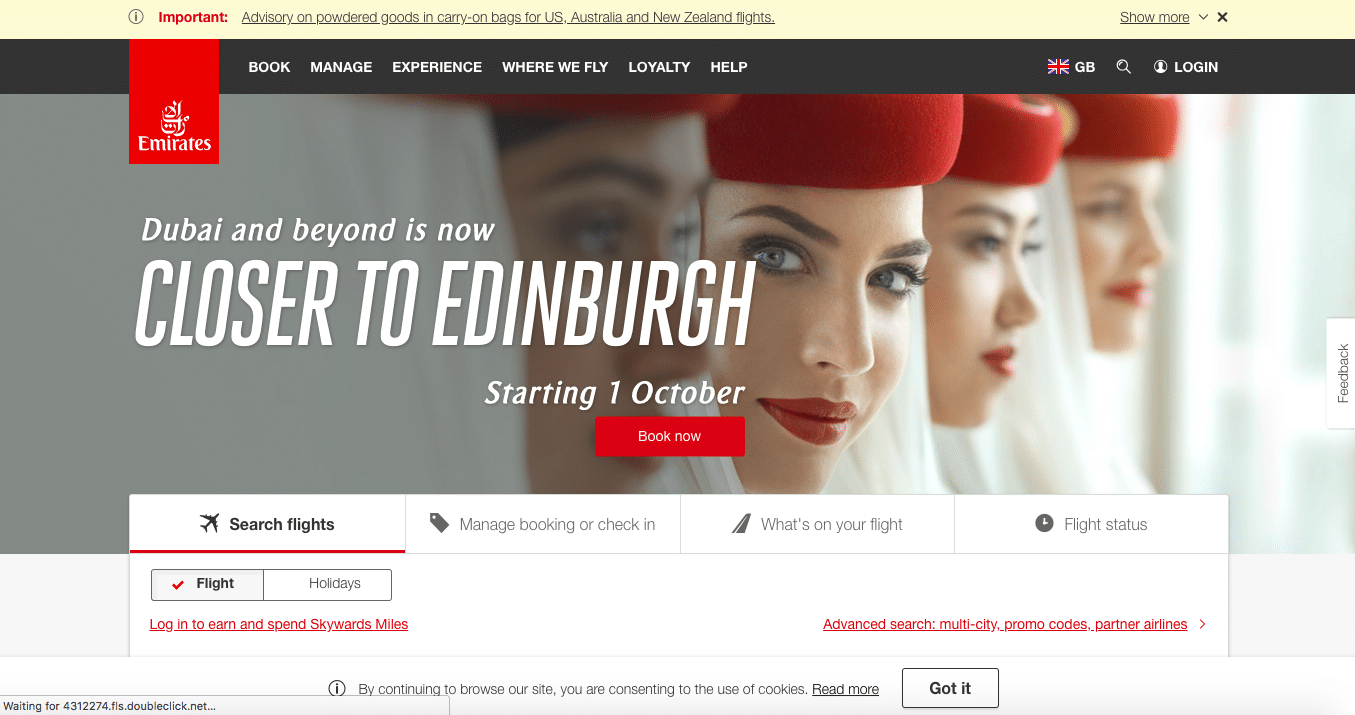
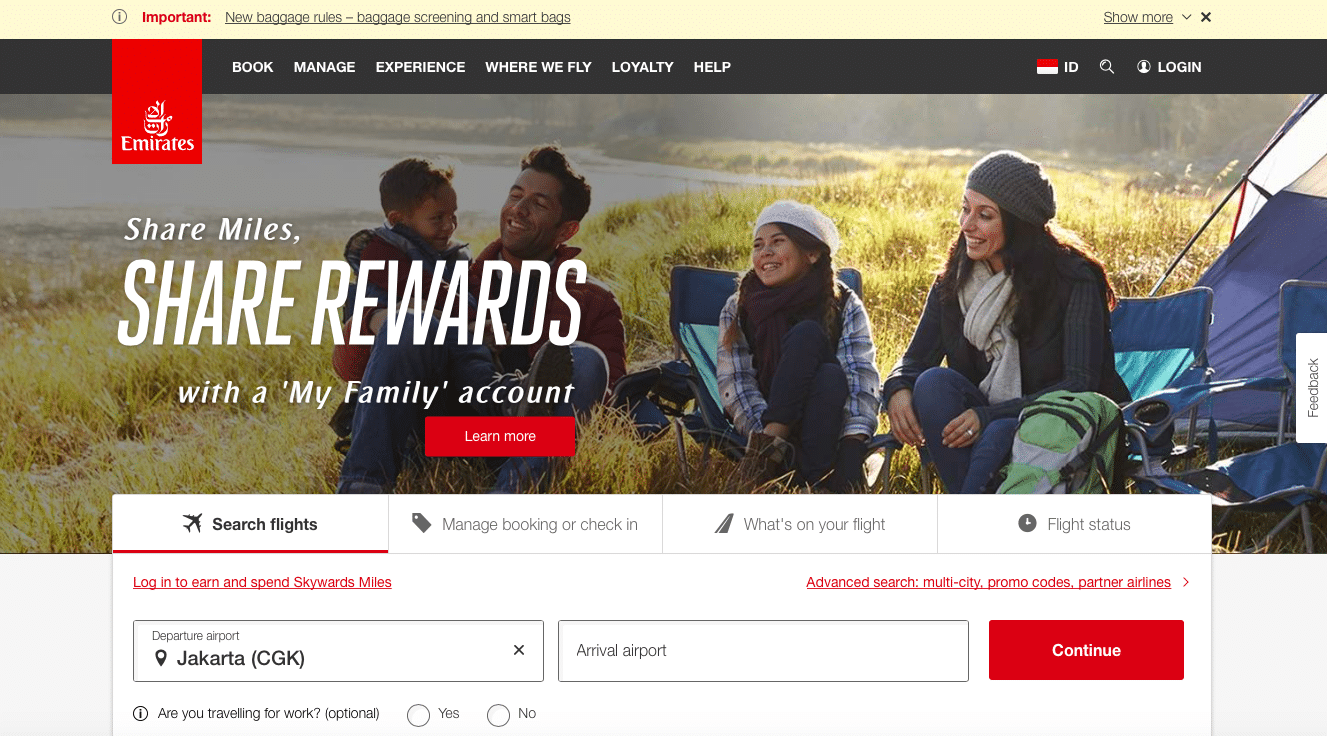
Images: Emirates UK vs. Emirates Indonesia
Geo-Specific Personalization
Where your customers are matters in determining what content they should see. If you are a global company, there will undoubtedly be differences in the products you offer, the phrases you use, and other geo-specific attributes. Chances are, you want to narrow down the customer’s location even further down than their country.
You may need to guide customers to your local offices in their city or provide different solutions based on that state’s laws or regulations. A good example of this is the background screening industry. Providers of employment background screening look at each state differently. Each state has its own requirements, so that’s one part. The other part is that pricing varies because it’s cheaper to do a background check in some states than others.
In these cases, based on your user’s IP address, location is discernible, and visitors could see different messaging that aligns with their needs. Doing this from the beginning creates a really great customer experience and could win you their business.
Content Personalization Based on Referral Source
Editing content based on the referral source of your visitors is an under-utilized technique that can be quite powerful.
For example, if they were referred from another website, you could insert a personalized message: “Special offer only for our visitors from X!” Or if they came from Twitter, you could scatter pull-quotes with “Tweet this” buttons throughout your content.
If a visitor comes from Pinterest, there’s a good chance they’ll be more engaged by visual content so you could generate a custom page with more images, including special “pinnable” graphics. This will, in turn, promote your content further on Pinterest so your content is essentially generating traffic itself.
You should also consider the content that’s visited by users from paid ads carefully. These visitors are normally looking for something specific. They could well be frustrated if your site doesn’t answer this need. Consider constructing targeted landing pages for visitors from paid ads.
When you’re directing users from email campaigns to content on your site you have more personalization options. You’ll have access to more data such as name and potentially detailed information about preferences and demographics. You can use this data to personalize your content dynamically and serve several different versions of your content to different buyer segments.
Customer Journey Personalization
The customer journey isn’t always easy to map out, as so many things can impact purchasing decisions. However, it’s important to have content that addresses each stage, which allows you to provide content that meets customers where they are on the journey and hopefully nudges them forward.
Think about post-click landing pages. If a new lead downloads an awareness stage eBook, they are still in the early stages, figuring out what they need. It doesn’t make sense for the thank-you page to ask them to book a demo or consultation immediately. They aren’t ready.
Instead, offer them more great content that’s on the same topic as the eBook. You can push them back to your blog, and hopefully, they’ll stick around and learn more about your brand.
Personalized Appreciation
Just like a receipt from a waiter with a personalized, handwritten message ensures a bigger tip, a piece of content marketing that shows just how much brands appreciate their customers increases audience engagement. Marketers who personalize content are doubling their returns in marketing performance and response. Using interactive content to personalize communication means that marketers can go beyond being on a first-name basis with customers in subject lines: it’s the next step in creating highly specific, hyper-personalized solutions that reward audiences for their engagement with individualized offers in the future.
Scaling Personalization
Content personalization takes work, even with the right technologies. You don’t want to lose the personalized element and revert back to the traditional marketing approach.
Doug Kessler, the Co-Founder and Creative Director of Velocity Partners, suggests starting with segmenting by discipline, either vertical or geography, then behavior-triggered content as the next step.
For those who are familiar with Account Based Marketing (ABM), you essentially narrow down to a number of high value accounts you want to target and can manage, and focus your marketing efforts on developing and implementing personalized content and communication that is highly specific and relevant to a prospect and their needs.
To grow and scale your efforts, Miller recommends marketers to develop 1-3 templated content that provides the backbone, which they can then use to customize based on the insights they have gathered on a specific customer. This would help speed up the content creation process without needing to start from scratch for every account and compromising on the quality of your content.
Personalization also goes beyond the content marketers produce. As the Founder and CEO of Curata Pawan Deshpande suggests, personalizing curated content is often easier and can be just as valuable for prospects and customers.
For example, based on what you know about a specific list of email subscribers, you can personalize the content in your newsletter so you are only sharing pieces that are most relevant to them. Track to see which pieces resonate with them the most, and you can get even more granular and further personalize your content to include multiple topics, content types (i.e. infographics, videos, etc.) and authors that they would be most interested in reading about.
To determine which customers you should prioritize your content personalization efforts and roll out the “red carpet” experience for first, Jose Cerbrian, the VP of Email and Mobile Messaging at Merkle, recommends creating a model that allows you to predict and identify your most valuable customers.
To do so, look at your top customers and try to identify any patterns and trends, behavioral or demographic, that may help determine which prospects have the potential to become a high value customer.
Leveraging Martech and Automation
Data is inseparable from an effective content personalization strategy. Not only is data used to gain insights into your target audience’s needs and interests, data can also be used to predict future trends and behavior patterns so you can create personalized content that not only build and expand your existing relationships, but also effectively deepen engagement with your prospects and customers at every point of interaction throughout the buyer’s journey.
With content personalization, when you send someone in your nurture path offering them content A through an email for example, if they engage with the piece you can immediately expose them to content B. And if they engage with content B you can automatically trigger another personalized email offering them content C.
Content personalization allows you to move prospects through the process much faster by taking advantage of their attention and engagement now, rather than waiting for a week or two to reach out after they engage with the initial piece of content you send them or through a lead gen form.
This is why technology plays a critical role here. You want to make sure your martech stack, including your web analytics tools, content management system and other data sources, can be connected to provide deeper insights into your prospects and customers, so you can personalize further content and communication based on these insights as well as automating and managing your personalization efforts in a much more efficient manner.
Working together, data and technology can help you deliver a seamless, highly personalized omni-channel experience for your prospects and customers at every point of interaction with your content based on their needs, interests and preferences, allowing your brand to stand out from your competitors and engage your target audience more deeply and ultimately convert.
The Future of Marketing and Engagement Is Personal
Is content personalization a top priority for your marketing team? How have you been applying personalization to your content marketing efforts, and what is working or not working for you? I’d love to hear about your best practices, tips and lessons learned.
If you ask me, content personalization is all about making your customer feel special and that you understand their needs specifically. It can be a difference-maker and a competitive advantage in your content marketing. Of course, you’ll need regular and consistent content to make it possible. That’s where we can help!
If you are ready to get more traffic to your site with consistent, high-quality content, check out our Content Builder Service.
Set up a quick consultation, and I’ll send you a free PDF version of my books. Get started with personalized content right away and generate more traffic and leads for your business!


![AI and Content Marketing: A Love Story or Disaster Waiting to Happen? [Webinar Recap]](https://marketinginsidergroup.com/wp-content/uploads/2023/09/MIG-Feature-Image-Template-77.png)



